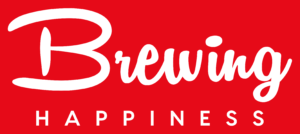The rise of non-surgical treatments has changed the face of the beauty industry—literally and figuratively. Where cosmetic enhancement once meant invasive procedures and long recovery times, it’s now about subtle, precise results achieved with a syringe rather than a scalpel. That shift has opened up a wave of new career opportunities, drawing everyone from nurses and medics to beauty therapists and complete newcomers into the aesthetics world.
But entering the industry isn’t as simple as watching a few YouTube videos and buying a dermal filler kit online. Aesthetics is a clinical field, and the margin for error is small. For anyone just starting out, beginner training is the single most important step—not only for patient safety, but for your own confidence and credibility.
So, what should you expect from a legitimate introductory course? What does “beginner” really mean when the stakes are this high?
Understanding the Basics (And Why They Matter)
No one wakes up one day and becomes an injector. Even the most natural practitioners had to start somewhere, and that “somewhere” is usually grounded in anatomy, safety, and the ethical framework of aesthetic medicine. A good beginner course doesn’t just show you how to inject—it teaches you why, when, and whether you should.
At this level, you’re laying the groundwork. That includes understanding facial structure, the mechanisms of ageing, product placement techniques, common complications, and how to assess suitability for treatment. It’s also about navigating patient consultations, managing expectations, and staying within your professional remit—particularly if you come from a non-medical background.
Some courses will segment the material into modules (e.g. toxin vs filler), while others adopt an integrated approach. Both are valid, provided they give you the chance to get hands-on, ask questions, and receive detailed feedback on technique.
The most valuable beginner courses tend to be those offering structured, practical foundational training in aesthetics that doesn’t feel rushed or overstuffed. These aren’t “crash courses”—they’re designed to build clinical judgement, not just muscle memory.
What You’ll Learn: The Core Components
While no two training academies are identical, most beginner courses cover a shared set of essential competencies. Anatomy is typically the starting point. Expect to learn about the planes of the face, danger zones for vascular compromise, and the muscles involved in movement and expression. This isn’t theoretical knowledge for the sake of it—it’s what enables you to inject safely, creatively, and with intention.
Next comes product knowledge. Understanding the difference between various toxin brands, filler types, and their respective properties is key. You’ll cover things like viscosity, cross-linking, spread, and how each product interacts with the skin and underlying tissues. This affects everything from treatment choice to injection technique.
Then comes technique itself: needle angles, depth, dilution ratios, dosage, and injection sites. Most beginners start with the upper face (botulinum toxin for frown lines, forehead, and crow’s feet), progressing to lips, nasolabial folds, and cheeks for dermal filler work. The order varies by provider, but the goal is the same—to leave you competent in a small number of core treatments before attempting anything more complex.
You’ll also cover adverse events and how to handle them. This includes how to identify signs of a vascular occlusion, when to refer out, and how to use hyaluronidase to dissolve filler if needed. It’s not the glamorous part of training, but arguably the most important.
What Makes a Course Worth Taking?
The aesthetics training market isn’t short on options—but that doesn’t mean they’re all equal. What you’re really looking for is depth, not flash. A small-group setting with live model practice is worth infinitely more than a slick video presentation and a certificate at the end.
The quality of your trainer matters just as much. They should not only be experienced injectors themselves, but also competent educators who can adapt their feedback to different learning styles. It’s also helpful if the course offers ongoing mentorship, or at least clear next steps for progression into advanced techniques.
Another consideration is the regulatory landscape. A good beginner course will introduce you to the legal and ethical frameworks surrounding aesthetics, including prescription rules, consent documentation, data protection, and what to do in the event of a complaint. Even if these aren’t the most exciting parts of training, they’re what protect you professionally.
The Next Steps After Training
Finishing a beginner course doesn’t make you an expert—but it does give you a foundation to build on. Many newly qualified injectors choose to shadow experienced practitioners, take further masterclasses, or slowly introduce treatments into an existing beauty business under supervision.
Others spend several months refining their skills in a small but focused treatment list, gaining confidence before expanding. There’s no single timeline for progression—it depends on your background, risk tolerance, and how quickly you find your rhythm.
What matters is that you understand the responsibility that comes with the role. The aesthetics industry might be booming, but it’s also under scrutiny. Patient expectations are rising, and so is the pressure to perform. That’s why your first training course is so crucial: it sets the tone for everything that follows.
Final Thoughts
A good aesthetics course won’t just teach you how to inject—it will teach you how to think like a practitioner. The confidence to treat comes not from watching others, but from knowing your theory, practising deliberately, and building a framework for safe, ethical care.
It’s not about skipping steps to start earning faster. It’s about taking the right steps, in the right order, to create a career with longevity. And that always starts with the basics—done properly.




